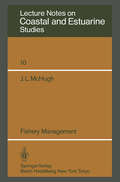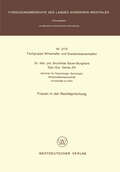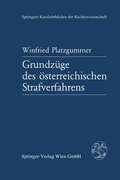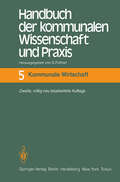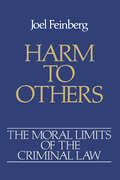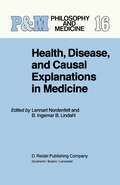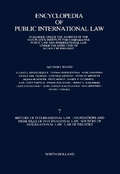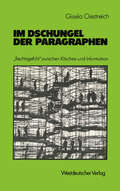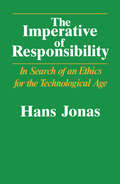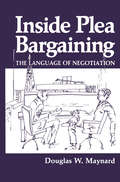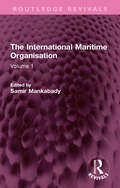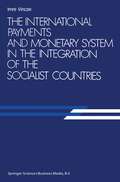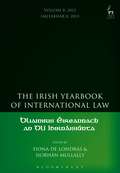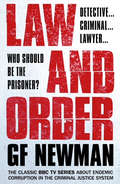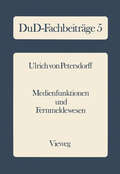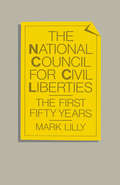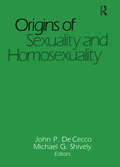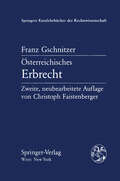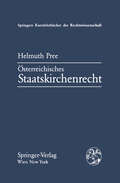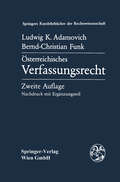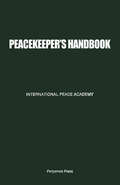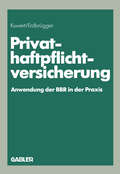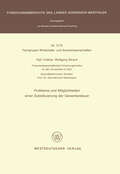- Table View
- List View
Fishery Management (Coastal and Estuarine Studies #10)
by J.L. McHughSeveral textbooks and useful compendia on fisheries have been published recently, and others are in preparation. The question then arises: why publish another book on fisheries at this time? My answer is 1) that fishery research and management are such broad subjects that it is difficult, if not impossible, to cover them adequately in one volume; 2) that consequently each author has stressed those aspects of greatest immediate interest to him; and 3) that to the best of my knowl edge no adequate broad treatment of the sociopolitical aspects of fishery management has yet ·appeared, although some good discussions have been published for particular fisheries. This volume grew out of a course that I have taught for the last 12 years at the State University of New Yo·rk at Stony Brook. Originally, the title of the course was Fishery Ecology, which was a matter of surprise to some students when they attended the fi rst few 1 ectures. Despite the sudden recent emergence of ecology as a household word, most people do not understand what the term means. I have found that even some graduate students forget that man is a potent force in the dynamic state of aquatic life. This is not only because he does things that change the environment and so affects living things in it, but also because he has such strange ways of thinking and of managing his affairs.
Frauen in der Rechtsprechung (Forschungsberichte des Landes Nordrhein-Westfalen #3174)
by Brunhilde Sauer-BurghardGrundzüge des österreichischen Strafverfahrens (Springers Kurzlehrbücher der Rechtswissenschaft)
by W. PlatzgummerDie Grundzuge sind zwar vor allem als Lernbehelf fur Studierende gedacht, doch sollen sie auch anderen Beniitzern eine kurze Information ermoglichen. Das erklart die Auswahl des Stoffes, der gelegentlich - besonders in den zwei letzten Teilen - iiber das hinausgeht, was ein erfahrener Priifer von seinen Studenten verlangen wird. 1m iibrigen habe ich mich urn eine moglichst geraffte und ubersichtliche Form der Darstellung bemuht, und zwar auch noch in der Gestaltung des Satzspiegels, wobei mir der Verlag sehr entgegengekommen istj ob es gelungen ist, den Stoff so darzubieten, daB ein rasches und leichtes Erfassen gefordert wird, muB der Leser entscheiden. Das beniitzte allgemeine Schrifttum ist in der Einfuhrung, die osterreichische Spezialliteratur zu Beginn jeder groBeren Einheit ausgewiesen, doch habe ich urn der besseren Lesbarkeit willen auf Zitate und Kontroversen im Text verzichtet. Auch die Rechtsprechung ist erst ab der Strafrechtsreform mit einigem Anspruch auf Vollstandigkeit beriicksichtigt. Herrn Univ.-Dozenten Dr. Helmut Fuchs und Herrn Univ.-Assistenten Dr. Wolfgang Brandstetter habe ich fur wertvolle Hilfe zu danken. Herr Dr. Brandstetter hat mich insbesondere auch bei der Zusammenstellung der Schrifttumsnachweise und des Sachverzeichnisses sehr wesentlich unterstutzt. DaB ich das Buch meinem verehrten Lehrer, Professor Nowakowski, wid men darf, empfinde ich als besondere Auszeichnung. Wien, imJuli 1984 Winfried Platzgummer Inhaltsverzeichnis Abkiirzungsverzeichnis. . . . . . . . . . . . . . . . . . . . . . . . . . . . . . . . . . . . .. XIII t. Tcil: Einfiihrung in den geltenden StrafprozeB. . . . . . . . . . . . . . . . . . . . 1 A. Begriff und Problematik des Strafverfahrens . . . . . . . . . . . . . . . . . . . . 1 Zum Begriff: 1; der StrafprozeB imSpannungsfeld widerstreitender Interessen: 2.
Harm to Others (Moral Limits of the Criminal Law)
by Joel FeinbergThis first volume in the four-volume series The Moral Limits of the Criminal Law focuses on the "harm principle," the commonsense view that prevention of harm to persons other than the perpetrator is a legitimate purpose of criminal legislation. Feinberg presents a detailed analysis of the concept and definition of harm and applies it to a host of practical and theoretical issues, showing how the harm principle must be interpreted if it is to be a plausible guide to the lawmaker.
Health, Disease, and Causal Explanations in Medicine (Philosophy and Medicine #16)
by B. Ingemar B.Lindahl LennartNordenfeltOn May 13-15, 1982, some 50 scientists and scholars - physicians, philos ophers and social scientists - convened at Hasselby Castle in Stockholm for the first Nordic Symposium on the Philosophy of Medicine. The topics for the symposium included (1) the concepts of health and disease, (2) classification in medicine, and (3) causality and causal explanations in medicine. The majority of the participants were Scandinavian but the symposium was also able to welcome four distinguished guests from other parts of the world, Professors Stuart F. Spicker and H. Tristram Engelhardt, Jr., U.S.A., Dr Anne M. Fagot, France, and Dr Werner Morbach, West Germany. The latter represented Professor Kazem Sadegh-zadeh, who unfortunately was prevented from attending. One of the main purposes of this symposium was to bring together people in Scandinavia who at present work within the field of Philosophy of Medi cine. This group is still relatively small but is growing rapidly, and the scholarly activity has recently been notable. This fact is clearly demonstrated by the presentation of 'Philosophy of Medicine in Scandinavia' in the Appendix of this volume.
History of International Law · Foundations and Principles of International Law · Sources of International Law · Law of Treaties: Published under the Auspices of the Max Planck Institute for Comparative Public Law and International Law under the Direction of Rudolf Bernhardt
by Sam StuartHistory of International Law · Foundations and Principles of International Law · Sources of International Law · Law of Treaties
The Imperative of Responsibility: In Search of an Ethics for the Technological Age
by Hans JonasHans Jonas here rethinks the foundations of ethics in light of the awesome transformations wrought by modern technology: the threat of nuclear war, ecological ravage, genetic engineering, and the like. Though informed by a deep reverence for human life, Jonas's ethics is grounded not in religion but in metaphysics, in a secular doctrine that makes explicit man's duties toward himself, his posterity, and the environment. Jonas offers an assessment of practical goals under present circumstances, ending with a critique of modern utopianism.
Inside Plea Bargaining: The Language of Negotiation
by D.W. MaynardNegotiation is a ubiquitous part of social life. Some even say that social order itself is a negotiated phenomenon. Yet the study of negotiation as an actual discourse activity, occurring between people who have substantial interests and tasks in the real social world, is in its infancy. This is the more surprising because plea bargaining, as a specific form of negotiation, has recently been the center of an enormous amount of research attention. Much of the concern has been directed to basic ques tions of justice, such as how fair the process is, whether it is unduly coercive, and whether it accurately separates the guilty from the innocent. A study such as mine does not try to answer these sorts of questions. I believe that we are not in a position to answer them until we approach plea bargaining on its own complex terms. Previous studies that have attempted to provide a general picture of the process as a way to assess its degree of justness have neglected the specific skills by which prac titioners bargain and negotiate, the particular procedures through which various surface features such as character assessment are accomplished, and concrete ways in which justice is administered and, simultaneously, caseloads are managed.
The International Maritime Organisation: Volume 1 (Routledge Revivals)
by Samir MankabadyOriginally published in 1984, this book provides a survey of the shipping rules adopted under the auspices of the International Maritime Organisation (IMO) during the latter part of the 20th Century. Its scope is wide-ranging, and, since the measures adopted by the IMO cover a great variety of disciplines, the papers in this book are written with clarity and authority by a number of experts
The International Maritime Organisation: Volume 1 (Routledge Revivals)
Originally published in 1984, this book provides a survey of the shipping rules adopted under the auspices of the International Maritime Organisation (IMO) during the latter part of the 20th Century. Its scope is wide-ranging, and, since the measures adopted by the IMO cover a great variety of disciplines, the papers in this book are written with clarity and authority by a number of experts
The International Payments and Monetary System in the Integration of the Socialist Countries
by Imre VinczeEconomic cooperation between the CMEA countries is implemented according to the monetary and financial regulations worked out collectively. The regulations cover the organizational structure of international settlements; the choice of currency for settlements; the principles of international credit transactions ; the determination ofthe exchange rate of the currency used in international settlements to national currencies and to convertible currencies outside the CMEA; the principles and rules ofinternational exchange and transfers; mIes for the currency allotments of citizens (roles of international transfers for citizens). The regulations also contain provisions for international settlements and credit transactions which are concluded through an independent international bank or banks. These regulations, the instruments and institutions together, form the international payments and monetary system of the CMEA. * The financial and monetary regulations of the CMEA community were formed in several stages, depending on the prevailing· conditions and the targets to be attained. In the years between 1949 and 1963 the general form of economic cooperation and of international settlements was the bilateral clearing agreement. In the bilateral agreements which the Soviet Union concluded with the other CMEA countries the currency of settlements was the Soviet rouble. The prices applied in foreign trade were not the internal producer prices of the Soviet Union, but world market prices (main international market prices) expressed in roubles, with the he]p ofthe exchange rate ofthe Soviet rouble to the US dollar, as quoted in the Soviet Union.
The Irish Yearbook of International Law, Volumes 4-5, 2009-10 (Irish Yearbook of International Law)
by Fiona de Londras agus Siobhán Ní MhaolealaidhThe Irish Yearbook of International Law is intended to stimulate further research into Ireland's practice in international affairs and foreign policy, filling a gap in existing legal scholarship and assisting in the dissemination of Irish thinking and practice on matters of international law. On an annual basis, the Yearbook presents peer-reviewed academic articles and book reviews on general issues of international law. Designated correspondents provide reports on international law developments in Ireland, Irish practice in international fora and the European Union, and the practice of joint North-South implementation bodies in Ireland. In addition, the Yearbook reproduces documents that reflect Irish practice on contemporary issues of international law. Publication of the Irish Yearbook of International Law makes Irish practice and opinio juris more readily available to Governments, academics and international bodies when determining the content of international law. In providing a forum for the documentation and analysis of North-South relations the Yearbook also make an important contribution to post-conflict and transitional justice studies internationally.As a matter of editorial policy, the Yearbook seeks to promote a multilateral approach to international affairs, reflecting and reinforcing Ireland's long-standing commitment to multilateralism as a core element of foreign policy.
Law & Order: Detective, criminal, lawyer, who should be the prisoner?
by G.F. NewmanA seminal series about the British criminal justice system, examining endemic corruption from the perspectives of the police, the criminal and the solicitor. The novels in this omnibus edition became the basis of the groundbreaking and controversial television series Law & Order.In the wake of a bungled armed robbery, the series focuses on Jack Lynn, a villain already known to the police; Inspector Fred Pyle, a cynical Scotland Yard Detective determined to nick him, and Alex Gladwell, a cunning lawyer who's perverting the system in order to get him off. As we are told the story from three different perspectives - The Detective's Tale, The Villain's Tale and The Brief's Tale – shocking questions begin to gather force: was Lynn even at the robbery? Do the police have any real evidence? Do the courts really want justice done? Do prisons change or simply reinforce criminal behaviour?'GF Newman secured himself a place in television history... a brutal assault on the police and the manner in which some of them operate' Daily Express
Medienfunktionen und Fernmeldewesen: Zur Verwaltungskompetenz der Bundespost bei Bildschirmtext (DuD-Fachbeiträge #5)
by Ulrich von PetersdorffOrigins of Sexuality and Homosexuality
by John Dececco, Phd Michael ShivelyThis well-documented book highlights some of the theories of bisexual and homosexual identities and their conceptual bases in cultural history, moral philosophy, biology, and social psychology. Some of the most respected minds in the field of human sexuality challenge traditional views on homosexuality and question the moral principles implicit in many existing psychiatric and psychological theories.
Origins of Sexuality and Homosexuality
by John Dececco, Phd Michael ShivelyThis well-documented book highlights some of the theories of bisexual and homosexual identities and their conceptual bases in cultural history, moral philosophy, biology, and social psychology. Some of the most respected minds in the field of human sexuality challenge traditional views on homosexuality and question the moral principles implicit in many existing psychiatric and psychological theories.
Österreichisches Staatskirchenrecht (Springers Kurzlehrbücher der Rechtswissenschaft)
by H. PreeDas vorliegende Buch will einerseits eine Einfuhrung in das österrei chische Staatskirchenrecht sein, die von ihrem Umfang her auf das Wahl pflichtfach "Kirchenrecht" nach der derzeitigen österreichischen Rege lung des Studiums der Rechtswissenschaften zugeschnitten ist. Über Stu denten hinaus wendet sich das Werk auch an alle jene, die mit staatskir chenrechtlichen Fragen in der Praxis befaßt sind. Die grundrißartige Darstellung umfaßt den ,.Allgemeinen Teil" des österreichischen Staatskirchenrechts. Das sind jene Regelungsgebiete, welche die Rechtsstellung des Individuums in den Sphären von Glaube, Gewissen und Weltanschauung zum Gegenstand haben, sowie die alle oder mehrere Kirchen oder Religionsgesellschaften betreffenden Normen des staatlichen Rechts. Auf Regelungen des »Besonderen Teiles" des öster reichischen Staatskirchenrechts, dh der staatlichen Rechtsstellung der einzelnen Kirchen und Religionsgesellschaften, finden sich zahlreiche Hinweise. Um die Kosten des Lehrbuches so niedrig wie möglich zu halten, wurde auf geschichtliche Ausführungen weitgehend und auf Fußnoten vollstän dig verzichtet. Aus demselben Grund stellen auch die Literaturangaben lediglich eine Auswahl des österreichischen staatskirchenrechtlichen Sie sind als Verzeichnis der hauptsächlich herangezoge Schrifttums dar. nen Literatur gedacht. Für zahlreiche Anregungen und Hinweise habe ich dem geschätzten Kollegen o. Univ.-Prof. Dr. Karl Spielbüchler sowie dem Dir.-Stellv. der Diözesanfinanzkammer Linz, Herrn Dr. Josef Wöckinger, zu danken.
Österreichisches Verfassungsrecht: Verfassungsrechtslehre unter Berücksichtigung von Staatslehre und Politikwissenschaft (Springers Kurzlehrbücher der Rechtswissenschaft)
by Ludwig K. Adamovich Bernd-Christian FunkBuchmann, Frau Gisela Klammer, Frau Dr. Gudrun Maurer, Herr Dr. Franz Merli und Herr Dr. Armin Stolz am Institut tiitig. Unser Dank gilt gleichermagen jenen Mitarbeitern, die in der Zwischenzeit aus dem Personalstand des Insti tuts ausgeschieden sind. Wien/Graz, im Oktober 1982 Ludwig K. Adamovich Bernd-Christian Funk Vorwort zur zweiten Auflage Die zweite A uflage des Lehrbuches ist als N achdruck der ersten in Verbin dung mit einem vorangestellten Erganzungsteil gestaltet. Der Text der ersten Auflage ist bis auf die Korrektur von Druckfehlern gleichgeblieben. Der Er in der Rechts ganzungsteil bietet eine Ubersicht iiberwichtige Veranderungen lage und Verfassungswirklichkeit, die sich seit der ersten Auflage ergeben ha ben. Die systematische Einarbeitung dieser und kommender Anderungen so wie der Entwicklungen in Lehre und Rechtsprechung bleibt einer spater fol genden Neuauflage vorbehalten. Wir hoffen, auf diese Weise dem Bediirfnis nach Information iiber den aktuellen Stand des Staatsrechts und des Verfassungslebens in entsprechender Weise Rechnung zu tragen. Der Wegfall des Untertitels des Buches auf der erst en Umschlagseite hat drucktechnische Griinde. In der positiven Auf nahme, die das Buch seit seinem Erscheinen im Spatherbst 1982 gefunden hat, sehen wir eine Bestatigung unseres Bemiihens urn eine moglichst vielseitige Betrachtungsweise des osterreichischen Verfassungsrechts.
Peacekeeper's Handbook: International Peace Academy
by Sam StuartPeacekeeper's Handbook is a ready reference for the planning and conduct of peacekeeping operations, both within the framework of the United Nations and in a regional or multinational setting. Topics covered include standing operating procedures, operational handling and techniques, logistics, and communications, along with preparation and preparedness and the role of civilian police in peacekeeping operations. Planning and procedures for medical services for international peacekeeping operations are also considered. This guidebook is comprised of 14 chapters and begins with an overview of the theoretical concept of international peacekeeping, followed by a discussion on the main organs of the United Nations, their functions in relation to international peace and security, and their powers and their responsibilities. The following chapters focus on the principles on which the policy on UN peacekeeping is based; the skill and technique requirements for the chief aspects of a peacekeeper's duties; and the organization and procedures for the logistics support of a UN operation at the level of UN Headquarters, Force Headquarters, and National Contingent. The organization and structure of the communications system within a UN Force are then described, along with the organization and procedure employed by the UN and its Forces/Missions to facilitate good public relations and an effective press information service. This text concludes by outlining the main principles and procedures in establishing a medical service. This handbook will be a valuable resource for diplomats, military officers, policymakers, academicians, students, and those interested in dispute settlement and conflict management.
